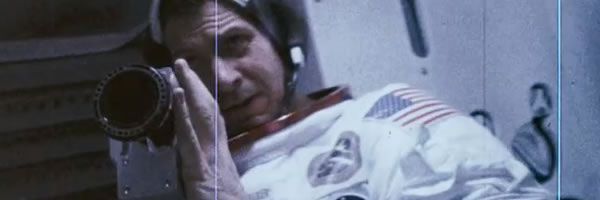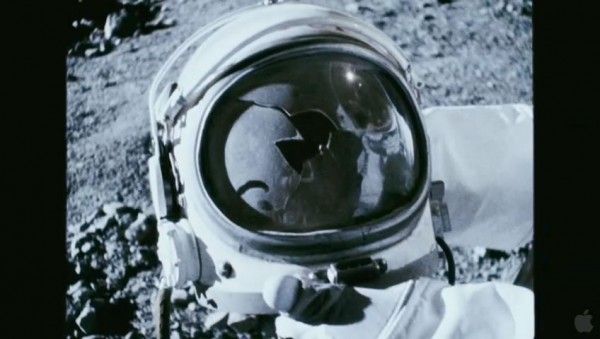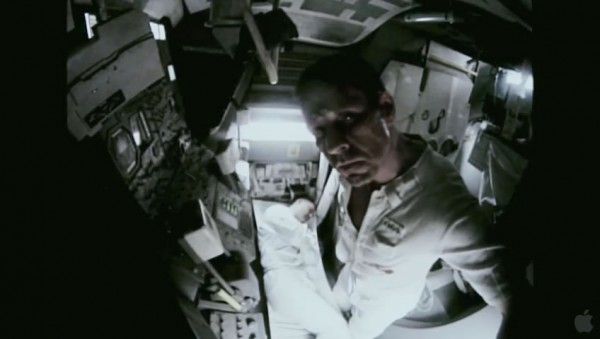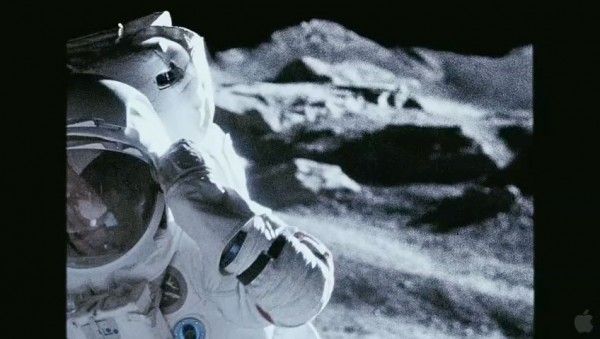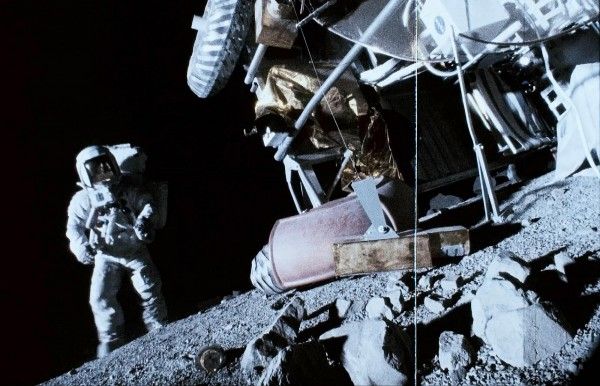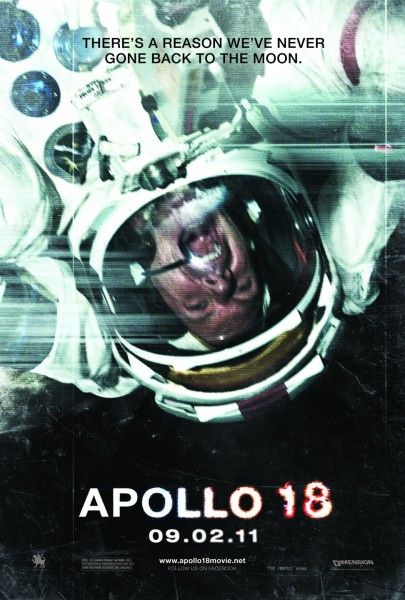I don’t like found footage movies. With the exception of the [REC] franchise, Man Bites Dog, and perhaps Henry: Portrait of a Serial Killer I cannot think of any that really worked for me. They most often begin with 20-25 minutes of filler, ‘developing’ the annoying protagonists who betray the set-up by making increasingly poor decisions that no real human being would ever make. It’s terrible. And then the money shot is what? A door opening slightly? Please.
Apollo 18 immediately differentiates itself from the current crop by launched into space less than five minutes into the first reel. And then kept going, building an intriguing and unique plot through the rest of its’ running time. Hit the jump for the full review.
The first thing I liked about Apollo 18 was that it sidestepped the ‘average Joe protagonist’ shtick entirely. Not only are the protagonists not stupid, they’re friggin’ rocket scientists. Also, unlike Paranormal Activity, things actually happen in this movie. Yes, we don’t see anything too creepy on the moon for a good while, but the title card at the beginning adds a great sense of impending doom, making the cramped space on the capsule all the more claustrophobic. At times, it reminds one of The Descent, easily one of the best horror films of the last decade.
The film makes extensive use of mixed media cinematography, cutting between all different types and qualities of film in a manner that adds a lot of verisimilitude and eases the audience into the counterfactual elements of the narrative. I was occasionally confused by the presence of interlacing lines on what should have to be Super 8 or 16 millimeter footage, but it is never so obtrusive as to take one out of the film.
And beyond functioning as a nifty visual gimmick, the multi-media presentation of the film directly addresses the elements of voyeurism implicit within the horror genre at large and more specifically within the pseudo-snuff trappings of a found footage piece. Not only are the characters filming and filming and filming, NASA and the Department of Defense are filming and filming and filming. In one clever shot, one can see the reflection of the camera overlaid on one character’s face. Eventually, this becomes part of the main text in a way that is legitimately chilling, both on a visceral and intellectual level.
In fact, this is what makes Apollo 18 special; it is perhaps the first narrative film to address the popularity of 9/11 conspiracy documentaries. Though it never touches on the modern world, the ‘lunartruth.org’ title card, the large scale conspiracy elements, the closing frames of the astronauts official cause of death and the ‘edited from stolen footage’ conceit all heavily recall Loose Change, the Abu Graib photos, Saddam’s hanging video and even at hint of the Tuskegee Syphilis Experiment. While most viewers will never pick up on this subtext, it will play just below the consciousness of many, adding depth and a creeping sense of malaise. Even as someone who is 100% not a ‘truther’ it added an extra element that I responded to emotionally.
But therein lays the film’s fatal flaw. At the outset, the filmmakers announce that the film was assembled from 87 hours of raw footage stolen from NASA and posted online. Fair enough, except for one thing; if some counterculture, wiki-leaks type is editing this film in his basement, why did he choose to cut it together like a straight thriller? The premise falters during some of the most effective sequences because it just doesn’t make sense that an exposé documentary would hide the alien monsters in shadows and quick cuts. Though these elements are effective as individual scenes, they are increasingly confusing when one considers them after the fact. Were this movie stupid, it wouldn’t matter much, but because it approaches the subject from a surprisingly intelligent angle, the cognitive dissonance is amplified.
The filmmakers would have done well to foreground the artifice further, adding in a few sequences of homemade editing tricks or goofs, moments here and there to remind the audience of the presence of the basement-dwelling editor with an axe to grind. Were the film to openly employ an unreliable narrator as part of the framing device, some of the logical flaws might be more excusable. As it stands, the narrative never fully locks into place and viewers are left to wonder about some of the meta aspects that don’t quite fit.
What’s more, the film out and out cheats during the final third, featuring several sequences of characters looking directly into the camera and making crazed face shaking movements that involve several jump cuts. It’s a little thing, and by act three you’re either with the film, or you’ve long since checked out, but it was still frustrating.
The biggest cheat, of course, is inherent in the premise. It is easy enough to accept that someone could find a video camera left behind after a monster attack or that someone could find a stack of film reels abandoned in the jungles of Africa, but it is infinitely more difficult to accept that someone found 78 hours of film footage left behind…on the moon, and then accept that all of this footage was digitized (HD telecine is expensive and if you dropped it off at Kodak, too many minimum wage types would see it) and then accept that all of this digitized footage was leaked online and edited into a traditionally structured thriller, released by a mini-major and delivered to your local theater.
All the same, most of Apollo 18 works. It might be damning the film with faint praise, but it is easily the best Hollywood found footage horror film of the modern era, possibly ever. While the premise overextends itself, there are enough creepy sequences and clever sound tricks to keep viewers alert and there is even a bit of socially relevant subtext that is all the more potent because of the film’s release date.
Rating: B

